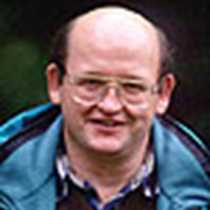Mount St. Helens National Volcanic Monument
Our historian gave us a quick history of the local economy and wood products industry as we made our way to our first stop. Longview, Washington is a major port for the export of whole logs. There is a large paper mill here and another upstream just a few miles. A huge pile of chip waits to be processed into paper. Barges from upriver can be seen at the dock waiting to be unloaded.
Our stop at Silver Lake Visitor Center was a fine introduction where we saw a film explaining the basics of what occurred relating to the volcanic eruption at Mount St. Helens in 1980. The mile long trail gave us a good idea of the type of forest we can expect in the area west of the Cascade Range. This included up close looks at Douglas Fir, Western Redcedar, evergreen huckleberry, sword Ferns and a variety of other herbaceous species. Continuing up the road we heard about geology from our naturalist. Mount St. Helens is a relatively new mountain at only 75,000 years old. It is part of the new Cascade Range that includes Rainer, Adams, Hood and a number of others. Mount St. Helens is one in a series of volcanic peaks that ring the entire Pacific Ocean, commonly called the “Ring of Fire.” Mount St. Helens’ eruption was unusual in the fact that it was a lateral blast, meaning the mountain blew out the side and only minimally (1,300 feet) off the top. The dust cloud circled the globe and the debris ran for miles before entering the Columbia River and shutting down the shipping channel to the upstream ports.
We saw all this destruction at the Johnson Ridge Visitors Center. The valley below had a giant channel of eroded ash and rock. The plant life is slowly returning – paintbrush and pearly everlasting as well as Pentstemon's could be seen. Distance is deceiving in this landscape, it was 6 miles from the point the accompanying picture was taken to the crater.
A wonderful buffet picnic had been laid out at the picnic area of Coldwater Lake. Grilled Tuna and lamb chops were the centerpiece of the lunch. We do not lack for eating opportunities on the National Geographic Sea Bird. After lunch options included a short boardwalk walk at Coldwater Lake or a long 2 ½ mile hike or a slower mosey with natural history interpretation on the “Hummocks” Trails. The Hummocks are a series of hills and depressions filled with water on the surface of the 1980 eruption’s debris flow.
Returning to the ship we settled in as we headed downriver into the sunset listening to our historian tell of Astoria, tomorrow’s destination.
Our historian gave us a quick history of the local economy and wood products industry as we made our way to our first stop. Longview, Washington is a major port for the export of whole logs. There is a large paper mill here and another upstream just a few miles. A huge pile of chip waits to be processed into paper. Barges from upriver can be seen at the dock waiting to be unloaded.
Our stop at Silver Lake Visitor Center was a fine introduction where we saw a film explaining the basics of what occurred relating to the volcanic eruption at Mount St. Helens in 1980. The mile long trail gave us a good idea of the type of forest we can expect in the area west of the Cascade Range. This included up close looks at Douglas Fir, Western Redcedar, evergreen huckleberry, sword Ferns and a variety of other herbaceous species. Continuing up the road we heard about geology from our naturalist. Mount St. Helens is a relatively new mountain at only 75,000 years old. It is part of the new Cascade Range that includes Rainer, Adams, Hood and a number of others. Mount St. Helens is one in a series of volcanic peaks that ring the entire Pacific Ocean, commonly called the “Ring of Fire.” Mount St. Helens’ eruption was unusual in the fact that it was a lateral blast, meaning the mountain blew out the side and only minimally (1,300 feet) off the top. The dust cloud circled the globe and the debris ran for miles before entering the Columbia River and shutting down the shipping channel to the upstream ports.
We saw all this destruction at the Johnson Ridge Visitors Center. The valley below had a giant channel of eroded ash and rock. The plant life is slowly returning – paintbrush and pearly everlasting as well as Pentstemon's could be seen. Distance is deceiving in this landscape, it was 6 miles from the point the accompanying picture was taken to the crater.
A wonderful buffet picnic had been laid out at the picnic area of Coldwater Lake. Grilled Tuna and lamb chops were the centerpiece of the lunch. We do not lack for eating opportunities on the National Geographic Sea Bird. After lunch options included a short boardwalk walk at Coldwater Lake or a long 2 ½ mile hike or a slower mosey with natural history interpretation on the “Hummocks” Trails. The Hummocks are a series of hills and depressions filled with water on the surface of the 1980 eruption’s debris flow.
Returning to the ship we settled in as we headed downriver into the sunset listening to our historian tell of Astoria, tomorrow’s destination.




